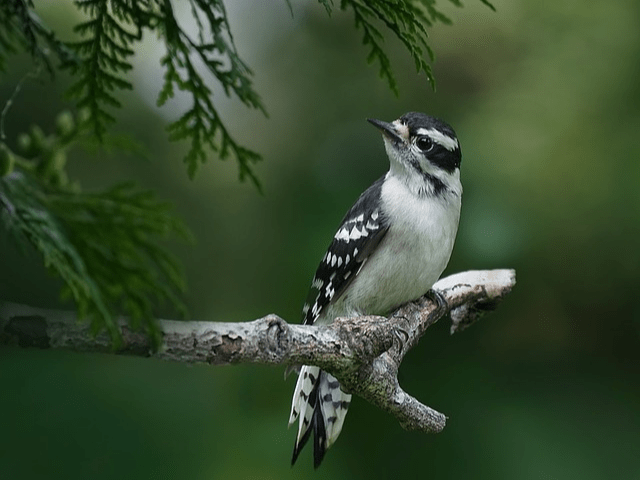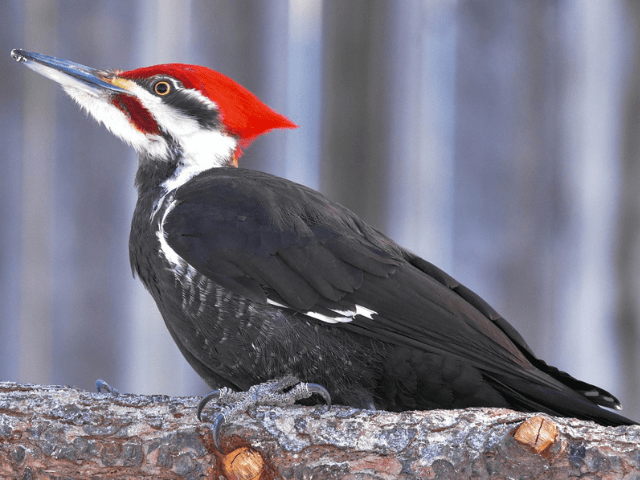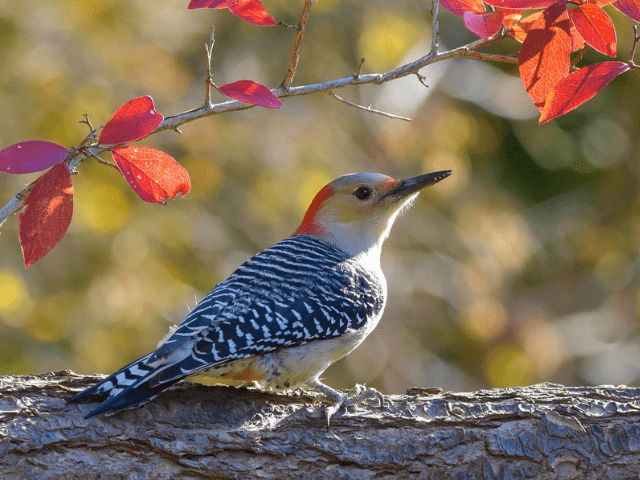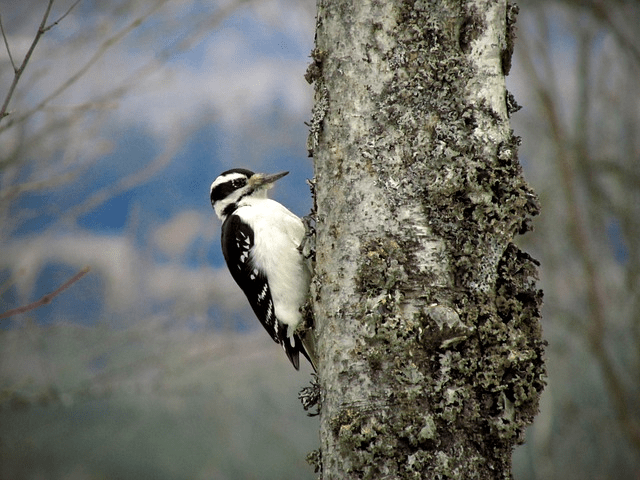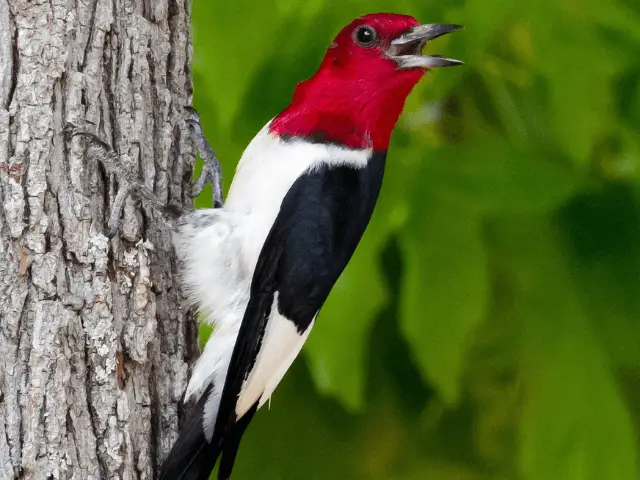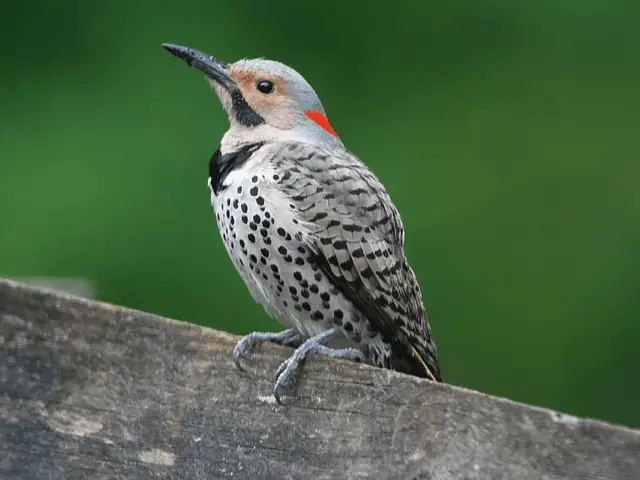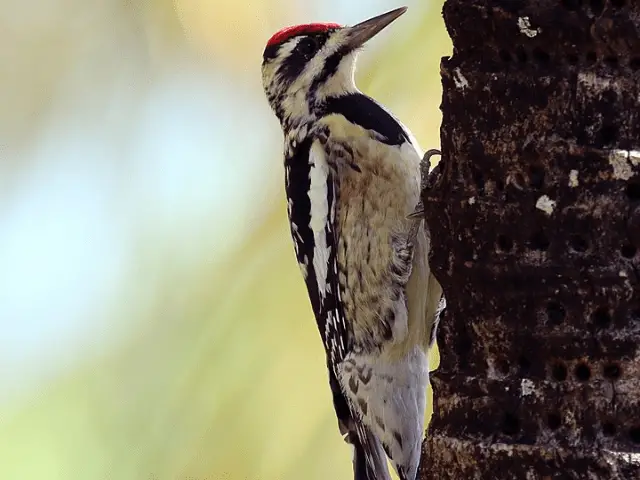Woodpeckers are some of the most renowned species in the birding community.
And for sure...
Whether you are an expert or not, you are probably familiar with the unmatched beauty of these birds.
There are a total of 300 woodpecker species that exist around the globe. However, today we will explore some interesting characteristics of the woodpeckers in Ohio.
What Makes Ohio Woodpeckers Unique
Although there are 22 different species in the United States, you can find seven types of woodpeckers in Ohio. While this figure may seem small, thousands of each species can be found all over the state.
You will be happy to know that Ohio woodpeckers spend most of their time in heavily populated areas. These birds are ideal subjects for photography because you can easily find them if you know where to look.
Natives of Ohio commonly welcome all thespecies of woodpeckers to their yards.
With any luck, homeowners may even gain the trust of woodpeckers and create a long-term relationship with them. Even if it’s a simple gesture, woodpeckers remember the people of Ohio for their kindness.
Nevertheless, you can find most of the woodpeckers in Ohio at any time of the year. This article will guide you through several unique features of each species and other fun facts.
So…
If you want to identify the woodpeckers of Ohio effortlessly, then keep reading to find out all about them. Who knows? It could be an excellent start to brand-new discoveries and learnings.
1. Downy Woodpecker
Measurements
- Wingspan: 9 -12 inches
- Weight: 0.7 - 1 ounce
- Length: 5 - 7 inches
Appearance
The downy woodpecker isn’t like other Ohio woodpecker species. At first glance, you may think that this bird has the body of any typical woodpecker. When in reality, their shape, color, and size are very distinct.
Their bodies highlight a neat and checkered pattern of white and black. However, this pattern is most noticeable on their wings; more prominent streaks of black and white alternate on their backs and underbellies.
You can quickly identify a male downy woodpecker because of the red spot that sits atop their heads.
Temperament
Downy woodpeckers are generally versatile birds because of their compact and medium-sized bodies. They are renowned for their signature rise-and-fall flight styles, which are present in many woodpeckers in OH.
You can often see these birds making all sorts of noise with their high-pitched voices even if you don’t remember their appearance. Downy woodpeckers have whiny calls, which you will often hear with rapid tree pecks.
Habitat
Birders can easily find these birds frequenting vast woodlands and tall trees. They sometimes even perch on bushes and forest edges.
You can also find them staying near orchards or hanging around parks and vacant lots. If you’re lucky, you could even catch them visiting bird feeders at backyards.
2. Pileated Woodpecker
Measurements
- Wingspan: 26 - 30 inches
- Weight: 8 -12 ounces
- Length: 15 - 19 inches
Appearance
With their gigantic bodies and flashy colors, it is impossible not to recognize the pileated woodpecker. Being one of the largest woodpecker species globally, pileated woodpeckers have well-built bodies comparable to crows.
Although they are distinct for their size, pileated woodpeckers have an eye-catching color pattern.
The first thing you can notice about this Ohio woodpecker is the fine streak of red that traces their heads. However, upon further inspection, pileated woodpeckers have a small patch of red near their beaks.
Pileated woodpeckers have black bodies and tails. They also have black wings but reveal a pure white upper half on their underwings when extended. The pileated woodpecker features black and white streaks on their faces and long necks.
Temperament
The pileated woodpecker loves to spend its time drilling rectangular holes into old trees to feed on insects. It produces a slow, drum-like pattern that echoes throughout the forest.
Experienced birders often rely on this peculiar chopping sound to locate pileated woodpeckers.
These birds have a simple, undulating flight pattern, just like any other woodpecker.
Habitat
Pileated woodpeckers stay in forests with large, sturdy trees to support their heavy bodies. These trees will vary from deciduous, evergreen, or even a combination of both. They thrive in environments filled with insects like the carpenter ant.
In the state of Ohio, birders will spot pileated woodpeckers frequenting different backyards and suburbs with lots of greenery.
3. Red-Bellied Woodpecker
Measurements
- Wingspan: 13 - 16 inches
- Weight: 2 - 3 ounces
- Length: 9 inches
Appearance
Among the woodpeckers of Ohio, the red-bellied woodpecker is likely the timidest. Red-bellied Woodpeckers are medium-sized birds that have a similar built with the hairy woodpeckers.
This species has a remarkably delicate and calm appearance. red-bellied woodpeckers have a vibrant shade of red-orange streak on their head. Although their underbellies are essentially pale and yellowish, you can see hints of red lightly blended in.
The red-bellied woodpecker has a zebra-like pattern on its wings and tails. This unique color scheme enables them to stand out during the winter.
Temperament
Red-bellied woodpeckers have a habit of hopping along high branches and hitching on large trees with rough barks. Despite being a woodpecker, this species picks on the bark of trees instead of pecking into them.
These birds are very territorial but also lovable creatures. On rare occasions, you might even spot them playing with each other. Additionally, the red-bellied woodpecker has an undulating flight pattern which is characteristic of their bodies.
Habitat
While you can mainly find the red-bellied woodpeckers in Ohio, these birds are common species that stay in forests and Eastern Woodlands. They live peacefully in environments filled with oak and hickory trees.
Just like many woodpeckers of Ohio, the adventurous red-bellied woodpeckers explore backyards and frequently visit feeders. In some cases, they may even hang around poles near the road.
4. Hairy Woodpecker
Measurements
- Wingspan: 13 - 16 inches
- Weight: 1 - 3 ounces
- Length: 7 - 10 inches
Appearance
You can conveniently distinguish hairy woodpeckers with their medium-sized bodies proportionate to their square-shaped heads.
A beautiful contrast of white and black is present all over their bodies. Birders can quickly identify hairy woodpeckers for their peculiar checkered wings. Hairy woodpeckers boast a pure white underbelly that highlights their broad chests.
You can also spot a patch of vibrant red on the crowns of male hairy woodpeckers. If you want pictures of woodpeckers in Ohio, then hairy woodpeckers can be your ideal photo subject.
Temperament
Hairy woodpeckers frequently hitch trees until they reach a high and sturdy branch. These birds love to perch and observe their surroundings for their next meal. If necessary, hairy woodpeckers will even explore fallen logs and tree roots to feed.
They have a clear, undulating flight pattern like many woodpeckers in OH.
Habitat
Do you love walking in forests? Well, you’re in luck. Hairy woodpeckers primarily live in mature forests in Ohio. However, they also enjoy the warm environments of woodlots, suburbs, and even cemeteries at times.
Although they tend to stay within their territories, hairy woodpeckers visit woodlands with pine and oak trees. Odd as it may be, they even remain in recently burned forests.
5. Red-Headed Woodpecker
Measurements
- Wingspan: 16 inches
- Weight: 2 - 3 ounces
- Length: 7 - 9 inches
Appearance
Red-headed woodpeckers are medium-sized creatures with a rounded head that sits on top of their delicate bodies. They also feature a robust and thick beak in contrast with their stiff tails.
Right away, you will probably notice the deep red-shaded head of the red-headed woodpecker. These birds have deep black backs that alternate with white on the lower layers of their body when perched.
Their underbellies are snow-white with light hints of gray and brown. You can also see small patches of black nearing the red-headed woodpecker's tails.
Temperament
Naturally, red-headed woodpeckers will drill into the sides of trees to search for food. However, they are also agile enough to catch insects mid-flight and rapidly strike them on the ground.
If they aren’t feeding on insects, the red-headed woodpecker will consume large amounts of various fruits and seeds. These birds can easily traverse a wide range of ground in a short amount of time for food.
Habitat
Red-headed woodpeckers will often nest in pine savannahs or vast open forests in Ohio. The state offers various potential habitats such as pine plantations, agricultural areas, and even several wetlands. These places are all more ideal habitats for the red-headed woodpecker.
6. Northern Flicker
Measurements
- Wingspan: 16 - 20 inches
- Weight: 4 - 6 ounces
- Length: 11 - 12 inches
Appearance
Northern flickers are a peculiar-looking species of birds. These picture-perfect birds have narrow but well-rounded heads, long curved beaks, and a pointed tail. They have broad chests that curve inward to bring out their heads.
Northern flickers are probably the easiest woodpeckers in Ohio to identify. Their bodies are mostly a light shade of brown with black dots all over their underbellies. A grayish head sits proudly on their slender shoulders.
Although northern flickers have white rumps, you will be surprised to discover bright orange on their undertails and underwings. A decent-sized patch of black also sits between their necks and chests.
Temperament
Their oddity doesn’t end with their appearance. Northern flickers spend much of their time on the ground despite being a woodpecker.
However, when they are perching on trees, they carry themselves in an upright posture on sturdy, horizontal branches. Comparably, most woodpeckers cling onto the sides of trees, unlike the northern flicker.
Habitat
Northern flickers simply adore open habitats with plenty of trees to perch on. They also frequently stay around woodlands, forest edges, and especially backyards. Northern flickers outside Ohio even call mountain forests their home.
7. Yellow-Bellied Sapsucker
Measurements
- Wingspan: 13 - 16 inches
- Weight: 1 - 2 ounces
- Length: 7 - 9 inches
Appearance
Yellow-bellied sapsuckers are creatures with a rather exotic appearance. While they are small birds, you can still recognize them for their tiny, straight beaks. The yellow-bellied sapsucker’s wings neatly folded onto its sides, pointing to its stiff tail.
These birds are a mixture of black and white all around their body. They have a primarily white and yellow underbelly which fades into black toward their backs. Yellow-bellied sapsuckers have black-and-white streaky patterns on their wings to their tail tips.
All yellow-bellied sapsuckers have a vibrant red patch in the middle of their heads. However, only the male variety of their species have red throats.
Temperament
Yellow-bellied sapsuckers carry themselves in a straight upright manner on trees. Like any woodpecker, they balance themselves using their tail.
Yellow-bellied sapsuckers extract sugary sap by drilling a neat circular hole on the side of trees. They also feed on any insect that gets caught up in the tree sap.
Habitat
They might be small birds, but yellow-bellied sapsuckers are undoubtedly brave. These birds can thrive in all sorts of environments. You can find some of these species in conifer and hardwood forests.
Yellow-bellied sapsuckers can settle in up to 6,500 feet of elevation. They typically nest in small trees such as aspens. You might even see them visit bird feeders in backyards.
Frequently Asked Questions
What kind of woodpeckers are in Ohio?
Ohio is a stunning home to seven different woodpecker species, which is half as many as there are in Wisconsin. The state has plenty of ideal habitats for the following woodpeckers as also mentioned in details early on in this article:
- Downy Woodpecker
- Pileated Woodpecker
- Red-bellied Woodpecker
- Hairy Woodpecker
- Red-headed Woodpecker
- Northern Flicker
- Yellow-bellied Sapsucker
This video highlights the species of downy woodpeckers:
What is the largest woodpecker in Ohio?
Among the largest woodpecker in Ohio is the pileated woodpecker. This bird is part of the largest woodpecker species in the world and has wings measuring up to 30 inches and can grow as tall as 19 inches.
Final Thoughts
The woodpeckers of Ohio are a sight to see. Even if some of them may be difficult to spot, all seven species have attractive, unique traits and charms. Learning all their characteristics is a gradual process, but you will get there eventually.
From their distinct flight patterns to their multitude of colors, you might just be on your way to becoming a birding expert.


